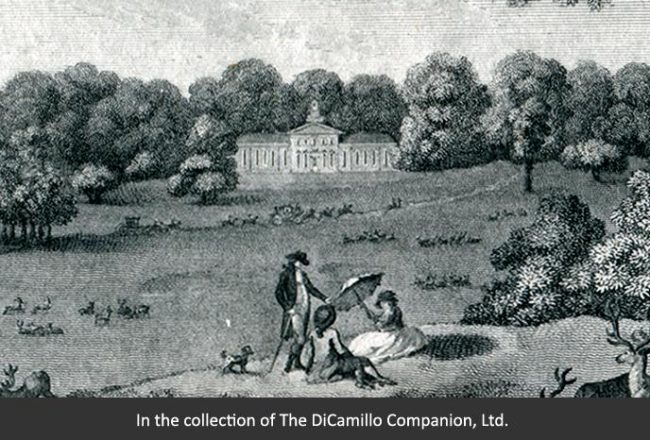
The first (late 17th century) house and park from a 1794 engraving

The west facade of the second (19th century) house

The keep and the sunken garden

The south lawn
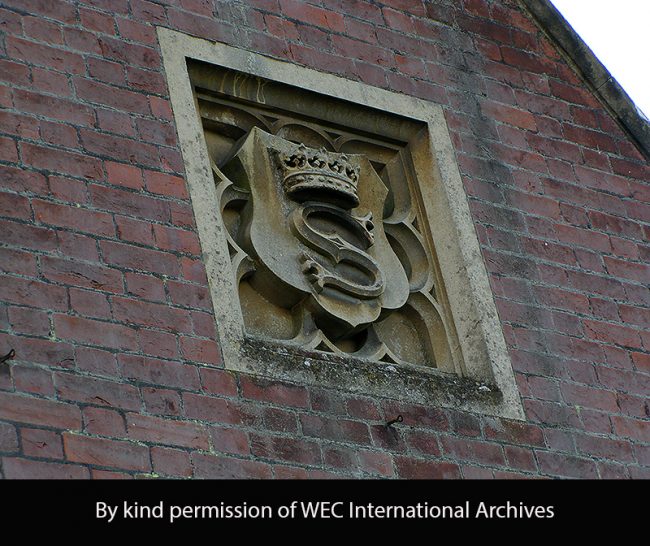
The Somerset ducal crest

Book Room ceiling



A Rubens grisaille sketch for "The Triumph of Venus," today in the collection of the Fitzwilliam Museum, Cambridge.
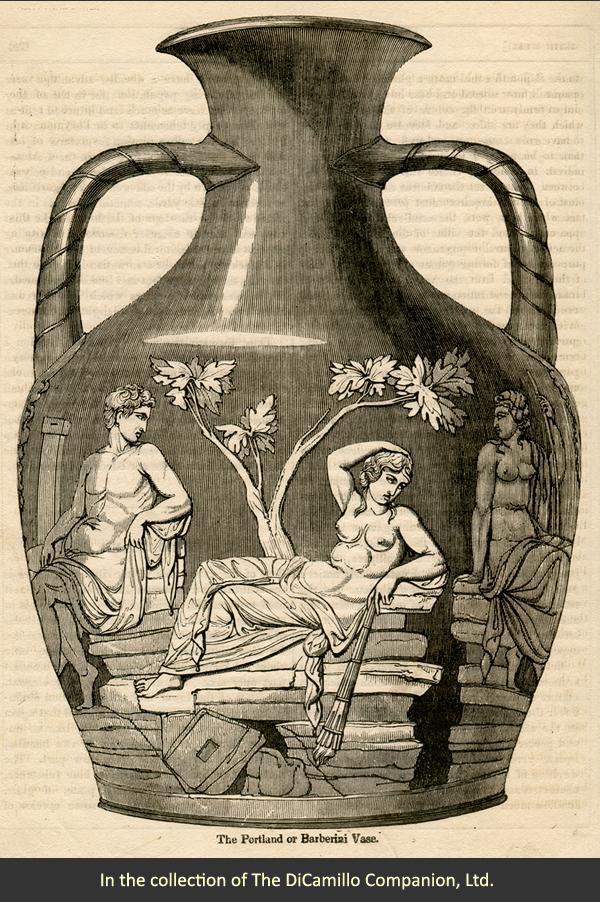
The Portland Vase from an 1860 publication
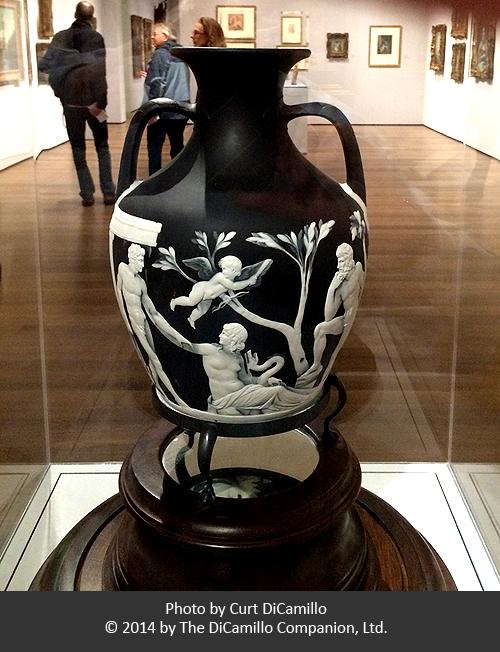
A circa 1795 Wedgwood Jasperware Portland Vase, No. 9 of the first edition, today in the collection of the Harvard Art Museums.
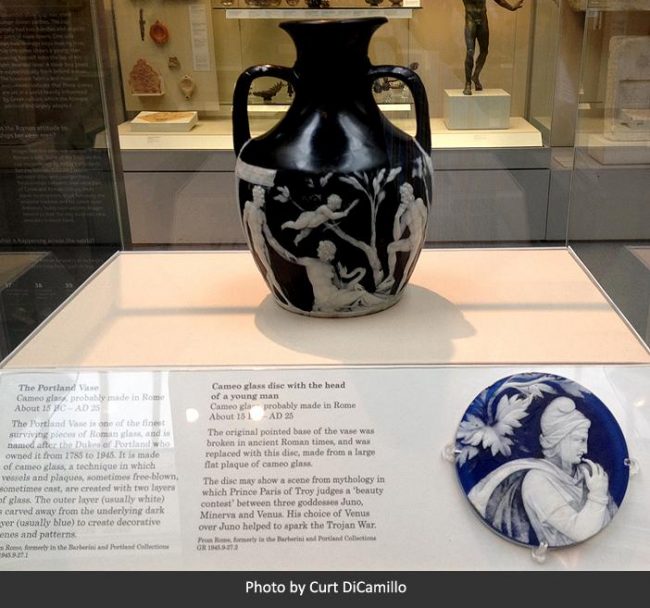
The Portland Vase in the British Museum

Scene from the Portland Vase on a 1930s bakelite brooch

The Portland Vase on a circa 1832 Spode dinner plate
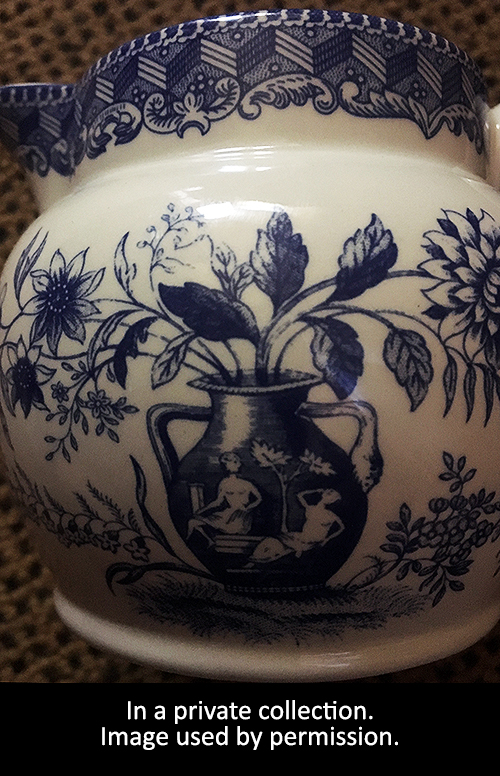
The Portland Vase on a blue and white Spode creamer
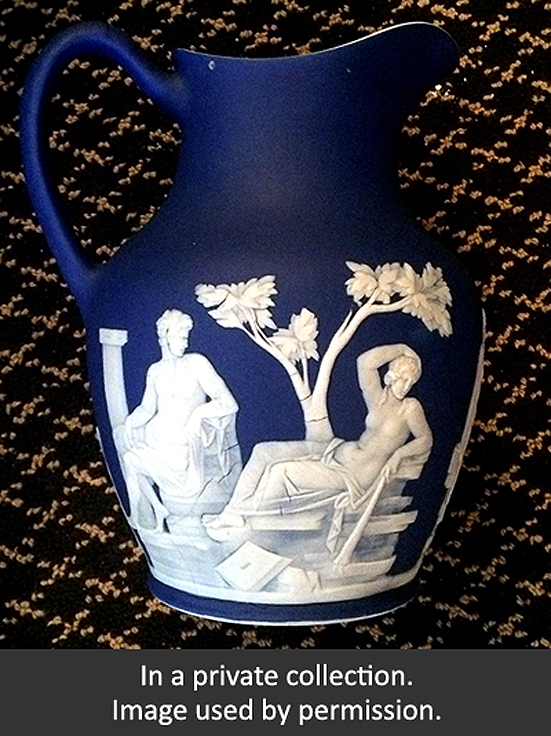
The Portland Vase, as reproduced on a late 19th century Wedgwood pitcher.
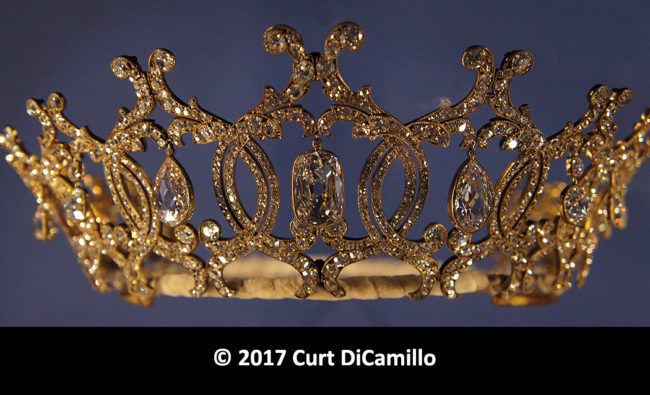
The Portland Tiara, Cartier, 1902. Formerly in the collection of Welbeck Abbey; stolen from there in 2018.
Earlier Houses: George Jeffreys, 1st Baron Jeffreys of Wem (1645–89), lord chief justice in 1682, also known as "The Hanging Judge," built a house here circa 1676-85. Judge Jeffreys presided at the trial of Titus Oates and is chiefly notorious for his brutality, and as the judge of the "Bloody Assizes." He was arrested in 1688 and died in the Tower of London in 1689, after petitioning for a pardon. After Judge Jeffreys's death Bulstrode was sold to Hans William Bentinck, 1st Earl of Portland, who made it one of his principal seats (he died at Bulstrode in 1709). Stiff Leadbetter altered the house significantly in the 1740s for the 2nd Duke of Portland, followed, circa 1806-09, by remodeling and additions, including the castellated west wing, to the designs of James Wyatt for the 3rd Duke. Bulstrode was famously used by Margaret Bentinck, wife of the 2nd Duke, to house her natural history and antiquities collection. Her son, the 3rd Duke, was a noted collector of art; he loaned the now-famous Portland Vase to Josiah Wedgwood, an act which insured, through many reproductions, that the vase would become one of the most famous objects of antiquity (see "Collection" section for more information on the Portland Vase). The 4th Duke of Portland inherited the estate in 1809; in 1810 he sold Bulstrode to the 11th Duke of Somerset. In 1860 the 12th Duke of Somerset demolished the house to make way for the current Bulstrode Park.
Built / Designed For: 12th Duke of Somerset
House & Family History: The 12th Duke of Somerset, Edward Adolphus Seymour, demolished the old house in 1860 and commissioned, in 1861, the current red brick and stone High Victorian Gothick style house to designs of Benjamin Ferrey. The house alternates between two and three stories and features a large square tower on the north. Circa 1899-1900 many of the interiors were remodeled by Frederick Eden in a Neo-Georgian style. After death of the 12th Duke, Bulstrode was inherited by his daughter, Lady Helen Guendolen Ramsden, and subsequently by her son, Sir John Frecheville Ramsden. In 1932 the outlying estate was sold, while the house and park remained in the ownership of Sir John. During World War II the house was used for training by the Women's Auxiliary Air Force (WAAF). After Sir John's death in 1958 most of the park surrounding the house was sold to a farmer and the house and its grounds were purchased by the Bruderhof Society of Brothers. In 1966 the Bruderhof Brothers moved to the United States, and in 1967 the property was purchased by the Worldwide Evangelization Crusade, today WEC International, a Christian evangelical missionary agency, who restored the house and grounds. At the end of 2016 WEC International sold the house, together with 40 acres, for £16 million to Ahmed Elfituri, who is converting Bulstrode into a luxury hotel.
Collections: The exceptionally famous Portland Vase, named after the dukes of Portland, is today in the collection of the British Museum, London. Most scholars believe the Roman vase was made about the time of the birth of Christ, during the reign of the Emperor Augustus (27 BC-14 AD). The vase is considered the most beautiful cameo glass vessel surviving from antiquity. It is made of dark blue-purple glass surrounded with a single continuous white glass cameo depicting seven figures, the cutting of which was very likely performed by a skilled gem cutter. Modern scholars estimate it took no less than two years to produce the vase. Though the circumstances of its modern discovery cannot be proved, it appears that the vase was discovered circa 1582 by Fabrizio Lazzaro in the sepulchre of the Emperor Alexander Severus at Monte del Grano, near Rome. The first written reference to the vase occurs in a 1601 letter from the French scholar Nicolas Claude Fabri de Peiresc to Peter Paul Rubens, in which it is recorded as being in the collection of Cardinal Francesco Maria Del Monte in Italy. It later entered the collection of the acquisitive Barberini family (the Barberini Vase, as it was then known, was the prized possession of Maffeo Barberini, later Pope Urban VIII [1623-44]) and remained with them until sold in the late 18th century. James Byres (1733-1817), a Scottish art dealer known as "the Pope's antiquary," (Byres settled in Rome in 1758 and conducted business from his house in Via Paolina) acquired the vase after it was sold by Donna Cornelia Barberini-Colonna, Princess of Palestrina. Byres sold the vase in 1778 to Sir William Hamilton (1730-1803), British ambassador in Naples, who brought it to England on his next leave (after the death of his first wife, Catherine). With the assistance of his niece, Mary, Hamilton arranged a private sale (for approximately £2,000, equivalent to approximately £3 million in 2016 values, using the labor value commodity index) to Margaret Cavendish Holles-Harley (1715-85), widow of William Bentinck, 2nd Duke of Portland. The vase was but one of many pieces of art and curiosities in the collection of the Duchess of Portland, whose collection was collectively called "The Duchess of Portland's Museum." The collection was enormously rich in natural history, but also included books, pictures, busts, coins, medals, miniatures, jewels, and china. After her death in 1785 the duchess's collection was auctioned on April 24, 1786 by Skinner and Co. The auction was a huge event, no less because of the inclusion in it of the famous vase, but it was more than just the vase that brought notoriety to the collection and the auction. W.S. (Lefty) Lewis, founder of the Lewis Walpole Library at Yale University, said of the duchess: "Few men have equaled Margaret Cavendish Holles Harley, Duchess of Portland, in the mania of collecting, and perhaps no woman. In an age of great collectors she rivaled the greatest. She is best known as having supplanted with her own name the famous Barberini-Hamilton vase..."). Her son, the 3rd Duke (1738-1809), purchased the vase at auction for £1,029 and placed it on loan to the British Museum (it was at this point that the vase acquired its current name). In 1810 the 4th Duke (1768-1854) placed the vase on permanent loan with the British Museum. The 3rd Duke also lent the vase to Josiah Wedgwood, who devoted considerable time in duplicating it in Jasperware with applied white reliefs (he did not achieve an acceptable replica until 1790 and considered the reproduction of the Portland Vase the culmination of his career). Wedgwood's success in replicating the vase led to an enormous increase in its notoriety, taking it for the first time out of the realm of the well-informed cognoscenti and into the upper middle classes. Ironically, today early versions of Wedgwood's Portland Vase are very valuable and found in the collections of many museums around the world (the first to enter an American collection, No. 9 of the first edition, is today in the collection of the Harvard Art Museum—see photo in "Images" section). In 1791 the naturalist Erasmus Darwin (he and Wedgwood were good friends and both were grandfathers of Charles Darwin) published an epic poem entitled "The Botanic Garden" that contains a section inspired by scenes on the Portland Vase. The vase has been on view in the British Museum since 1810, apart from three years (1929-32) when William Cavendish-Bentinck, 6th Duke of Portland, attempted to sell it. The vase was put up for auction at Christie's in 1929; however, it failed to reach its reserve of 29,000 guineas (£30,450) and remained in the ownership of the dukes of Portland until purchased from William Cavendish-Bentinck, 7th Duke of Portland, in 1945 for £5,000. The Portland Vase makes an appearance in fiction, being mentioned as having been rescued by time travelers from the future just before the destruction of the earth in Arthur C. Clarke's 1951 science fiction short story, "All the Time in the World." A Rubens grisaille sketch for "The Triumph of Venus," today in the collection of the Fitzwilliam Museum, Cambridge (see photo in "Images" section), was in the collection of the dukes of Portland at both Welbeck and Bulstrode.
Garden & Outbuildings: There are visible remains of a late 17th century formal garden, very likely designed by Henry Wise, Claude Desgots, or George London. Circa 1793 the grounds were laid out by Humphry Repton for the 3rd Duke of Portland. A number of follies have been built in the park over the years, including the two-story brick Pigeon House of 1805 (designed by James Wyatt and featuring open arches, battlements, and polygonal corner towers), the Shell Museum, the Menagerie, the Turkish Pavilion, and the grotto.
Chapel & Church: The Venetian artist Sebastiano Ricci decorated the Bulstrode chapel (destroyed) for the 1st Duke of Portland. In 1981 the Metropolitan Museum of Art, New York, acquired "The Baptism of Christ," a Ricci oil sketch for one of the walls of the chapel (the facing wall showed the Last Supper, and on the ceiling was the Ascension). The Met's oil sketch is the finest of three oil sketches for the decoration of the chapel.
Architect: Frederick Charles Eden
Date: Circa 1899-1900Architect: Stiff Leadbetter
Date: 1740sArchitect: Henry Wise
Date: Early 18th centuryArchitect: Claude Desgots
Date: Early 18th centuryArchitect: William Talman
Date: Beginning 1706Architect: George London
Date: 1706-07Architect: Sebastiano Ricci
Date: Post 1709Architect: James Wyatt
Date: Circa 1805-09Architect: Humphry Repton
Date: Circa 1793Architect: Benjamin Ferrey
Date: 1861-70Architect: Mary Delany
Date: 18th centuryVitruvius Britannicus: C. IVth. pls. 40-44, 1739.
Title: Buildings of England: Buckinghamshire, The
Author: Pevsner, Nikolaus; Williamson, Elizabeth
Year Published: 1994
Reference: pgs. 203-204
Publisher: London: Penguin Books
ISBN: 0140710620
Book Type: Hardback
Title: Duchess of Portland's Museum, The
Author: Walpole, Horace; Lewis, W.S. (Introduction)
Year Published: 1936
Reference: pgs. vi, 5-6
Publisher: New York: The Grolier Club
ISBN: NA
Book Type: Hardback
Title: Portland Vase, The (British Museum Objects in Focus)
Author: Walker, Susan
Year Published: 2004
Reference: pgs. 7, 21-24, 27
Publisher: London: The British Museum Press
ISBN: 0714150223
Book Type: Softback
Title: Biographical Dictionary of British Architects, 1600-1840, A - SOFTBACK
Author: Colvin, Howard
Year Published: 1995
Reference: pg. 953
Publisher: New Haven: Yale University Press
ISBN: 0300072074
Book Type: Softback
Title: No Voice From the Hall: Early Memories of a Country House Snooper
Author: Harris, John
Year Published: 1998
Publisher: London: John Murray
ISBN: 0719555671
Book Type: Hardback
House Listed: Grade II
Park Listed: Grade II*
Past Seat / Home of: SEATED AT EARLIER HOUSE: George Jeffreys, 1st Baron Jeffreys of Wem, 17th century. Hans William Bentinck, 1st Earl of Portland, early 18th century; Margaret Bentinck, Duchess of Portland, 18th century. SEATED AT CURRENT HOUSE: Edward Adolphus Seymour, 12th Duke of Somerset, 19th century. Lady Helen Guendolen Ramsden, 19th century. Sir John Frecheville Ramsden, 20th century.
Current Ownership Type: Corporation
Primary Current Ownership Use: Unoccupied
House Open to Public: No
Historic Houses Member: No